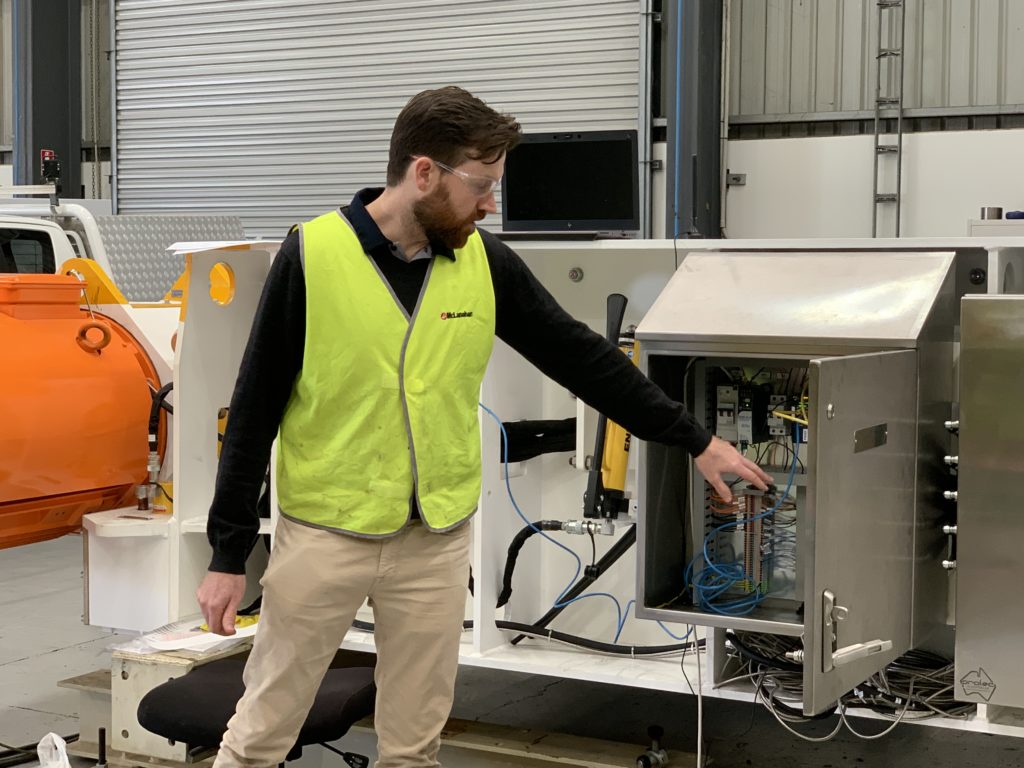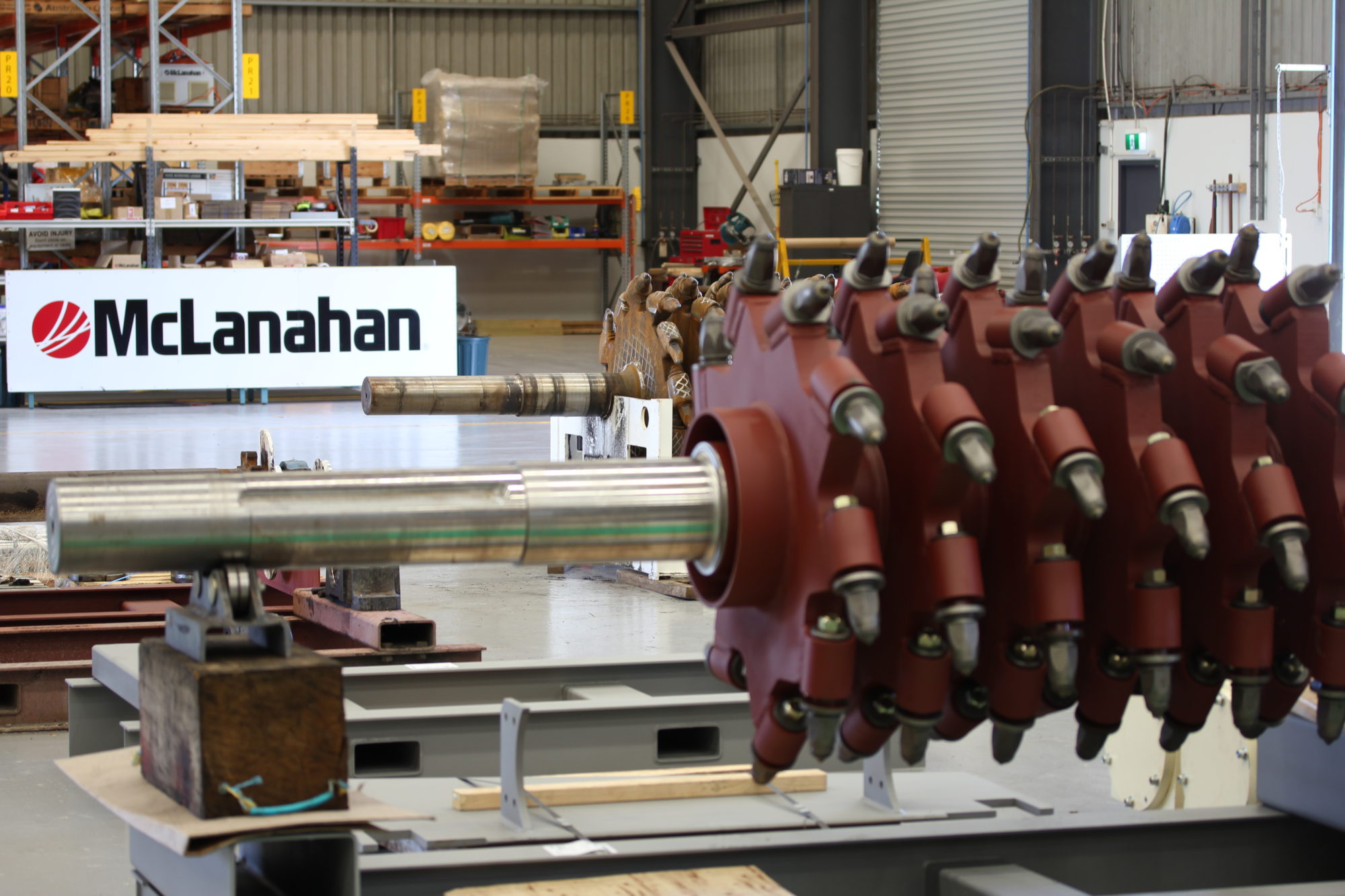As IM goes to press on its January 2021 issue, which includes its annual mine maintenance focus, McLanahan is stressing the importance of condition monitoring in the plant, which, it says, can lead to a well-oiled preventative maintenance plan that reduces equipment downtime.
Now more than ever, proactive maintenance and shutdown planning is crucial to maximising plant efficiency, McLanahan says. Maintaining uptime is paramount for achieving production outcomes and ensuring equipment will perform optimally.
At a bare minimum, equipment is now expected to integrate into the processing plant and, as such, must be able to interact both physically and digitally with up-stream and downstream nodes.
“The purpose of condition monitoring is to monitor equipment during operation to check its ‘health’,” McLanahan says. “Monitoring is scalable and customisable to each plant, process, and individual pieces of equipment, depending on the needs of the customer. Standard variables to monitor include vibration, temperature and power draw.”
Condition monitoring aims to reduce reactive maintenance and move towards preventative and predictive maintenance by setting base lines, identifying anomalies and producing performance trends. This process is faster, data driven and facilitates superior decision making, according to McLanahan.
Previously, equipment maintenance was designed around planned shutdown periods. Any data available was obtained and analysed manually. Alternatively, maintenance that fell outside of planned shutdowns was due to unexpected failures. As plants grow and the amount of equipment on site increases, it is very difficult to scale this manual process to meet the needs of today’s mining producers.
Packages that utilise off-the-shelf sensors and monitors help to set benchmarks for equipment monitoring standards. These devices deliver data to a local control box, which can forward the data to an often cloud-based database for viewing by the client and the equipment manufacturer.
Technology
The type of condition monitoring system chosen needs to be based upon identifying the needs of the plant or equipment, McLanahan says. By analysing the existing data available, goals can be developed to determine which variables should be measured.
Some of these operational goals include:
- Decrease unplanned downtime;
- Improve throughput;
- Identify bottlenecks; and
- Reduce maintenance costs.
The actual sensors are often quite basic and small. For example, the most popular vibration sensor type is an accelerometer, which, as the name implies, measure acceleration levels. Vibration sensors require mounting of the transducer to the vibrating item. This has the advantage of moving with the item, such as a bearing case, to measure absolute motion. With an accelerometer, how effectively it is mounted to the machine is critically important to ensure accurate measurement.

For wear measurement, the sensor could include a laser scan of the wear material surface from a fixed data point and compared with ‘as new’ baseline. Or, it could be a metal or optic fibre probe inserted into the wear liner that responds to an electronic pulse with the resistance value base on the probe length.
In either case, the signal can be captured for forwarding to a simple data logger through a fixed 24 V DC cable or a wireless signal. The complexity comes in using the correct software to ensure the raw data can be collected, correlated and presented in a format that is useful for the operator.
Benefits
The goal of most producers is to increase production while lowering costs and avoiding downtime, McLanahan says. New technologies help producers meet these challenges by increasing operational efficiency, reducing costs, improving safety and extending the life of the asset.
As the system alerts operators to potential risks, equipment maintenance moves from a reactive to proactive strategy. When a plant experiences a breakdown, technical experts are required to solve the issue. “Manual intervention and prioritisation of this urgent job often results in a mismatch with the resources required, leading to cost and time issues,” the company says.
Predictive maintenance provides improved maintenance scheduling, with this maintenance able to be carried out at a convenient time so as not to interfere with production time. This allows for increased plant uptime and productivity.
Cost reductions surrounding maintenance, personnel and parts can also be achieved by using condition monitoring. When spare parts are ordered in advance, last minute increased freight charges are avoided, freight delays are reduced and the inventory management system is improved.
Improved operator safety is also a positive outcome for plants, not just for the safety of their site personnel but also through improvements to the equipment’s design. Site personnel can be removed from potentially hazardous areas of the plant, while engineers and service personnel can provide intelligent feedback on issues through having immediate access to equipment data. To decrease the amount of paperwork and manual data entry, these tasks can be integrated into the automatic data collection system to build tables, line charts and graphs of useable data.
Improved customer relations between the supplier and customer can also be achieved, as inconvenient breakdowns are avoided and communication improves between the two parties.
Challenges
With the increasing number of equipment and process flows, the resulting amount of condition monitoring data will be enormous, yet this is also dependent on the frequency of data capture – capturing data every 10 seconds will produce more records than capturing data every 60 seconds.
When implementing a condition monitoring system, the downstream consequences need to be factored in. This includes the software, systems, processes and the people who analyse and interpret the data collected. There are always barriers to the adoption of new technology and, during the implementation process, the benefits of the system need to be highlighted, McLanahan says.
Sufficient training and an easy-to-use interface will help combat non-adopters and persuade a higher adoption rate of the new system, according to the company.

The data collected must also be distributed in a timely manner, with the analysis and learnings applied in a practical way. Plant operators must incorporate real-life maintenance scenarios with the automatic data collected to assist their operators to make safer, simpler and smarter cost-effective decisions. For example, analysing the thickness of wear liners will help to ensure the correct quantity are stored on site and how often they will need to be replaced.
Data security is also a consideration. As sites move from storing data on physical servers, often located away from the mine site, more of this is being stored on cloud-based systems. Data privacy and security are priorities for customers and must be considered in the implementation of any real-time data collection system.
Important factors to consider include:
- Where will the data be stored – is it a local data centre, or is it a regional data centre in another time zone?
- What is the backup/failover procedure?
- What information is kept about my site and why?
- How is the data transmitted?
- Data transmitted is often unintelligible until the cloud dashboard software makes it so.
Preventative maintenance
Prevention is the best cure, and preventative maintenance is one of the main benefits of condition monitoring. The system serves as an early warning sign, which, if left unattended, can lead to a full-scale breakdown, resulting in a loss of production, unexpected costs and the replacement and removal of the offending equipment and parts.
Preventative maintenance strategies should also include an audit of assets to determine which spare parts (critical parts, wear parts or consumables) should be kept on site. By engaging with the OEM, further cost reductions can also be gained, McLanahan says. Used in conjunction with real-time machine health monitoring to determine preventive maintenance activities, high quality spare parts from the OEM give operators consistency and peace of mind.











